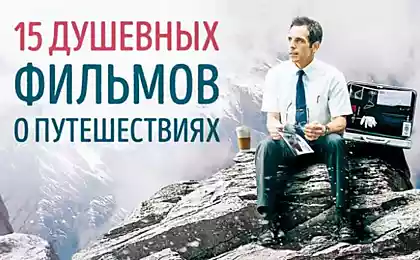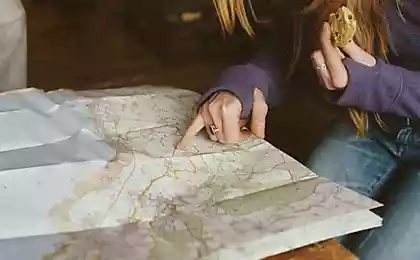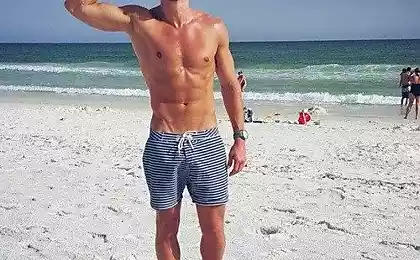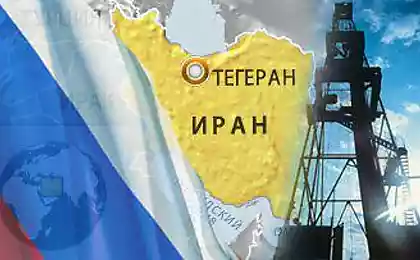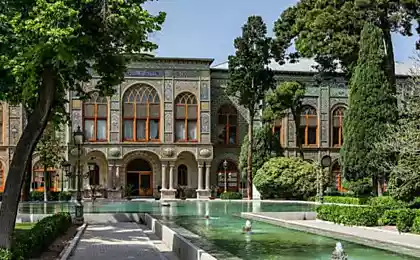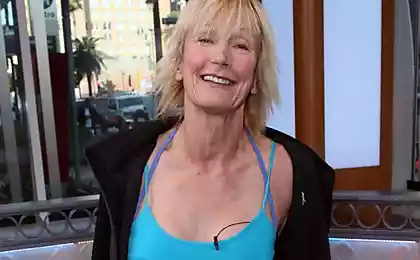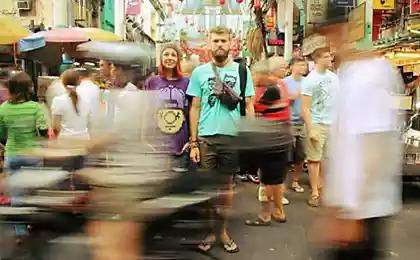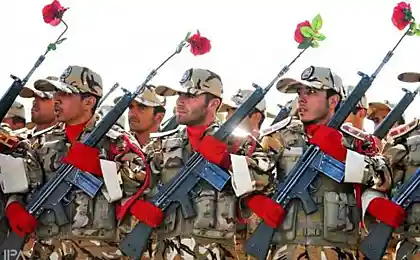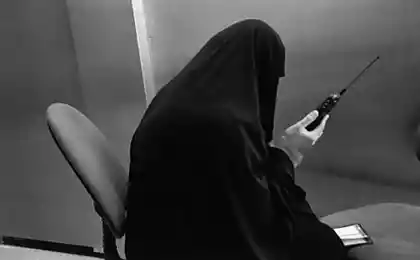1522
Tour of Iran (20 photos)
Photographer and traveler Chepl Amos (Amos Chapple) tells us the story and show the pictures as he visited the Islamic Republic of Iran.
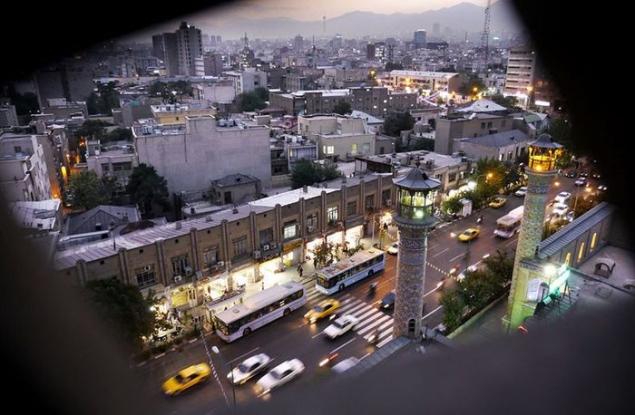
"I think because of the fact that the journalists' access to the country is very limited, people have formed a distorted view of what really is Iran. Mode prefers to portray the country as the boiler anti-Western sentiments, so they spread the news about the chanting fanatics who will gladly pick up foreign channels. For ordinary Iranians as the government is the source of endless embarrassment and even shame. In all the time I spent in Iran, I did not see anything except the address of good intentions and dignity in pronounced contrast with my experience in other countries of the Middle East. Last year in Kyrgyzstan, I met a soldier of US special forces, who said to me, when it comes to the Middle East, America are not the friends and not the enemies »
Palangan village in the mountains near the border with Iraq. Palangan perfectly illustrates the rural settlement, received subsidies from the government. Many residents are employed in the nearby fish farm or are paid members of the volunteer militia "Basy" in the scope of activities which includes the prevention of "zapadofikatsii" and preserving the achievements of the 1979 Islamic revolution and its leader, Ayatollah Khomeini, including strict rules on women's clothing and the relationship between men and women.
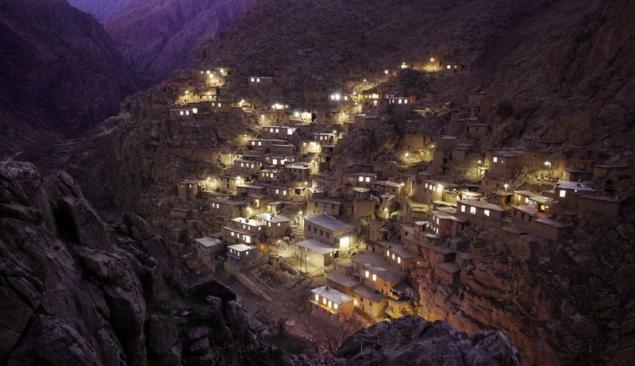
Working inside the mosque Vakil in Shiraz. The mosque is now a tourist attraction, but visitors to her a little bit. Although the tourism industry is growing, western tourists still account for only 10% of the total. One guide told me that their scare horrific government statements that have nothing to do with the real lives of ordinary Iranians.

The palace complex in northern Tehran Saadabad Islamic revolutionaries put the statue half overthrow of the Shah. Today, students come to the guided tours, walking past his boots and on to the palace to look at the former premises of the Shah.
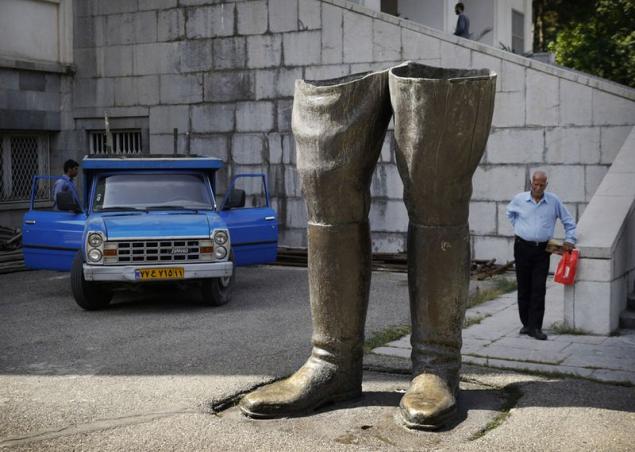
Women in the hills above Tehran at sunset. Hides clothing including head covering is obligatory for women in the Islamic Republic. However, the exact definition of "modesty" is not what causes gusts of struggle between the young and the Iranian authorities every spring. Regularly you can see female police check the passersby at the exit of the subway. If a woman's dress would be regarded as "immodest", her arrest. In 2010, the religious leaders in Tehran accused of frequent earthquakes in Iran women who "introduced the young men in fornication" with their revealing outfits.
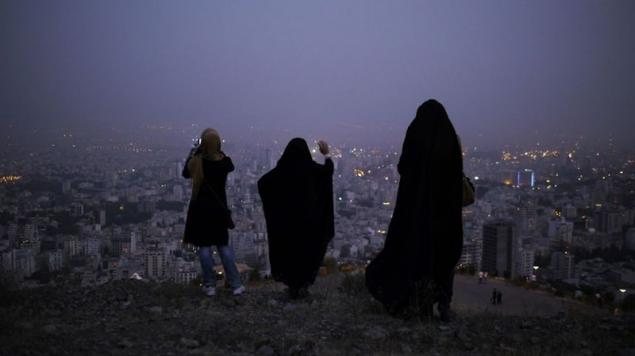
A shepherd leads his flock to pasture in the mountains on the Iraq-Iran border.

View of central Tehran mosque minaret Sepahsalar.

Mausoleum of Ayatollah Khomeini in Tehran. Work on the unfinished building have been going on for 23 years. With the growing economic chaos in the country, its completion is still postponed indefinitely.

Young worker passes through the colorful stained-glass windows from the glare of the Tehran bazaar. When Khomeini Iranians were encouraged to start a large family. By 2009, almost 70% of Iran's population was under the age of 30 years. However, according to some reports, the country is the least religious of all the countries of the Middle East. Therefore, instead of the "Army of Islam", to the cultivation of which Khomeini called on the younger generation now has become the greatest threat to the deeply unpopular regime.
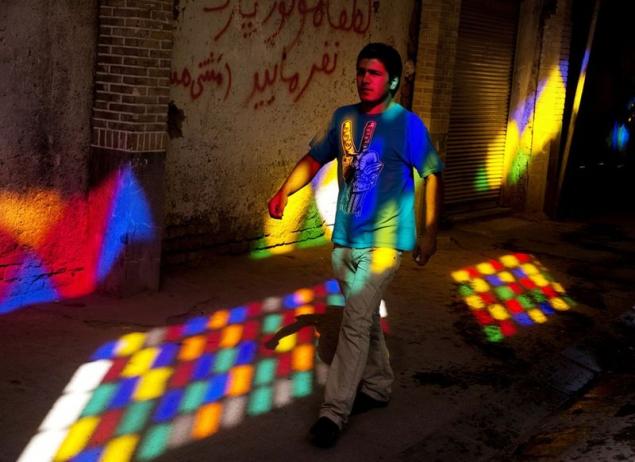
Details of Persepolis - the capital of the ancient Persian Empire. The conquest of Persia by the Arabs led to the Islamization of Iran, but the Iranian language Farsi alive. The poet Ferdowsi 11th century, called the "Iranian Homer", written in Persian epic called "The Book of Kings." Created with minimal Arab influence, this book helped preserve Farsi - one of the oldest on earth. It ends with the invasion of the Arabs, to show how disaster for Persia.
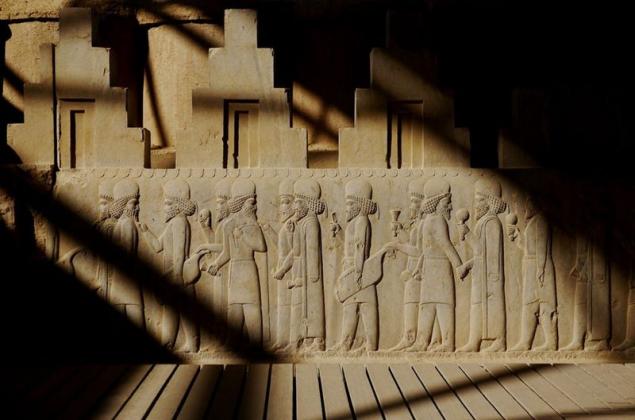
Young twins in Metro Tehran.
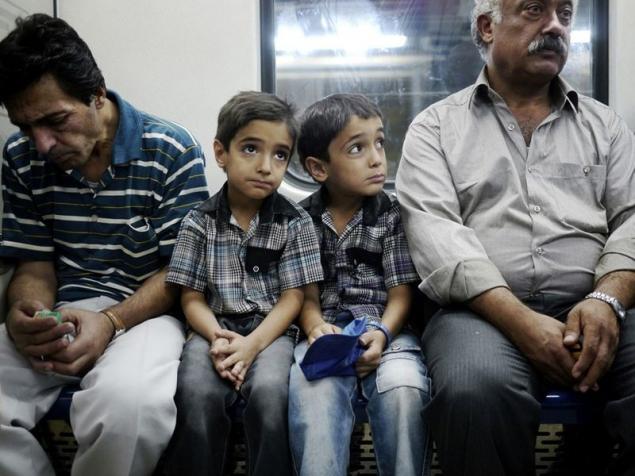
Collection of contemporary art worth 2, 5 million dollars belongs to the Museum of Contemporary Art in Tehran. During the few illuminated 2011 exhibition of work by artists such as Warhol (pictured), Pollock, Munch, Hockney and Rothko were exhibited for the first time since 1979, when the former owner of the collection of Queen Farah Pahlavi, was forced to flee the country with his husband - the last Shah of Iran.
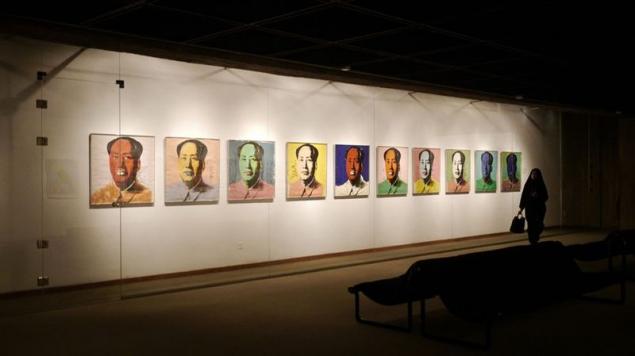
Details of Persepolis. After the Islamic revolution, radical religious leaders called for the destruction of the ancient city, but public discontent prevailed. "They understood that it will unite the people against them," - says English teacher Ali, quoted by National Geographic.
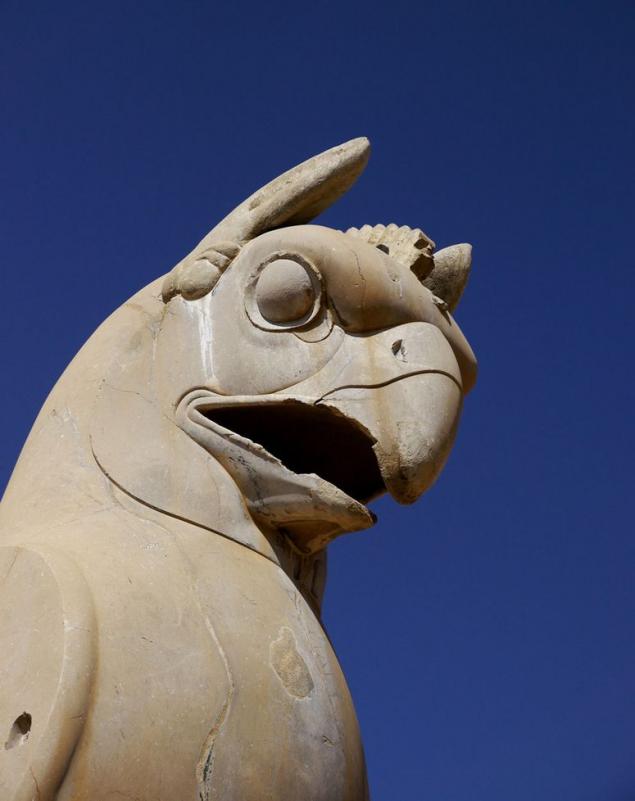
Drawing on the wall of the former US embassy in Tehran. This wall painting, in contrast to official statistics, shows that, despite the US sanctions and controlled by the Americans operation against selected and popular prime minister, among the Iranians more than positively inclined toward the United States than, for example, among the Turks or Indians. < br />
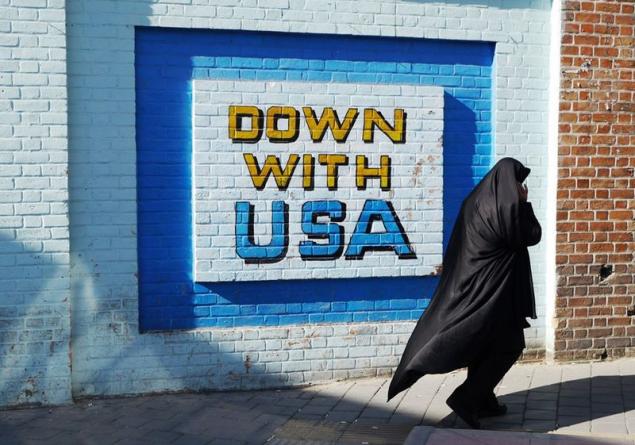
Kurd arranged for the night, guarding equipment for road construction in the mountains near the Iran-Iraq border. The border is infested by smugglers of bringing alcohol from Iraq (where it is legal) in the village on the Iranian side. From there it is transported to the city. Tehran can of beer on the black market is worth about $ 10.
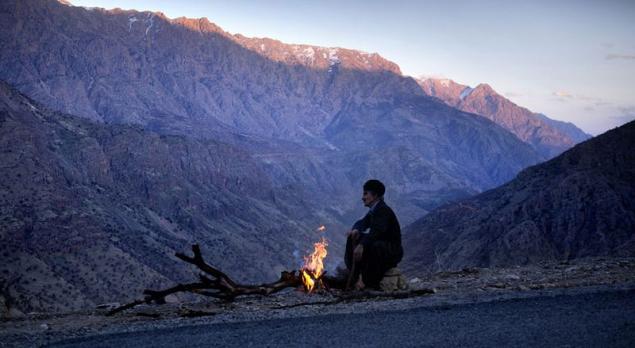
Two soldiers were attacked at the Tehran Metro in the conflict. An angry crowd mostly well-dressed young men hit a soldier in the head at least four times. Both soldiers had to get out of the subway at the next station. (Since the author is not fluent in Farsi to find out the cause of the conflict he could not).
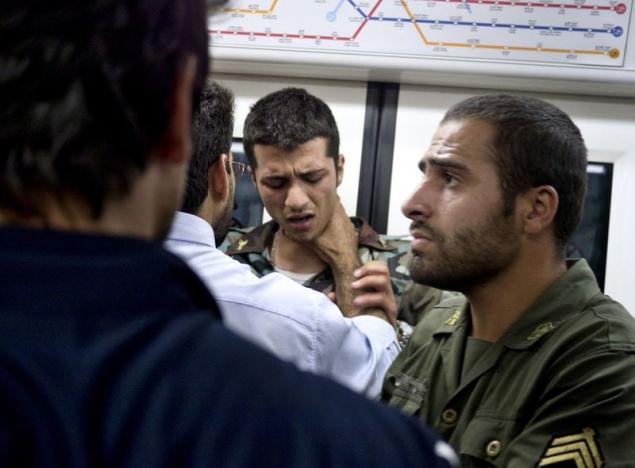
Azadi Tower ("Freedom") - a gateway to Tehran, constructed in 1966, 24-year-old Hossein Amanat. As a practicing follower of the teachings of the Baha'i, Hossein was forced to leave Iran after the Islamic government declared followers of the teachings of "unprotected Gentiles." He now lives in Canada.
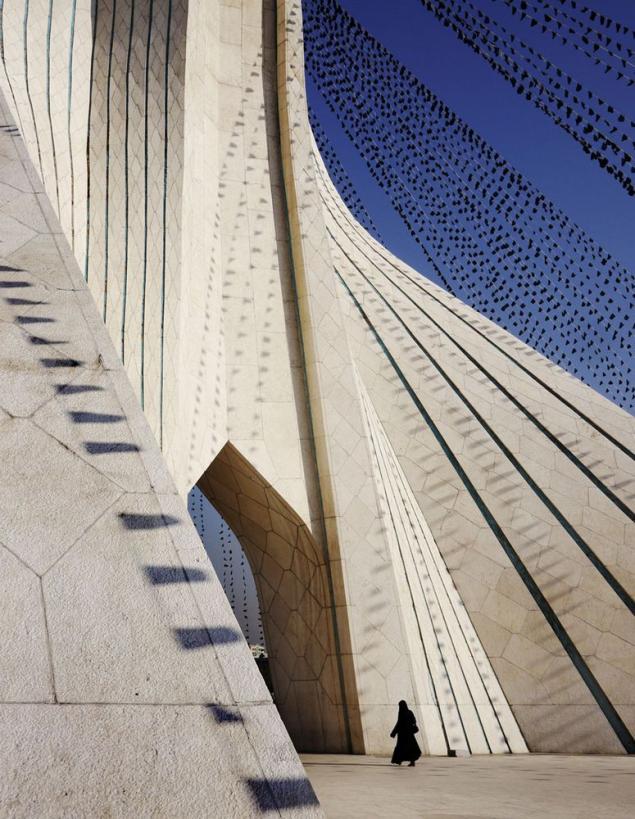
The man in the south of Tehran, in the working area of the city. Over the past 14 months to tighten sanctions reduced the cost by almost half of Iran's currency and caused an explosion of inflation. Life is extremely difficult for ordinary Iranians, but many feel powerless to change the situation. "We are not so naive as Arabs to think that violent uprising magically fix everything. We already had a revolution ... and things got worse, "- says a resident of Tehran.
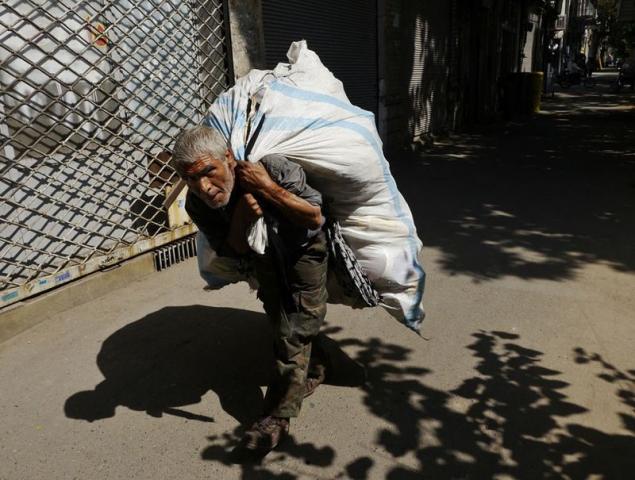
The memorial plate with the image of the former Shah of Iran in an antique shop in Shiraz. Shah was given as a result of the authoritarian government supported by the MI6 and the CIA operation in 1953, which overthrew Prime Minister Mohammed Mossadegh, and cost the lives of several hundreds of Iranian citizens. "Operation Ajax" was held after Mossadegh nationalized the oil industry in Iran, thus blocking the British dominance in the industry, which they controlled since 1913. Mossadegh was democratically elected leader, with widespread support and popularity among the population. As a result, the Shah, whom many saw just brutal puppet of the West, has received strong dissatisfaction of the population. Anger at Western invasion has provided strong support for the original fierce anti-Western Ayatollah Khomeini.
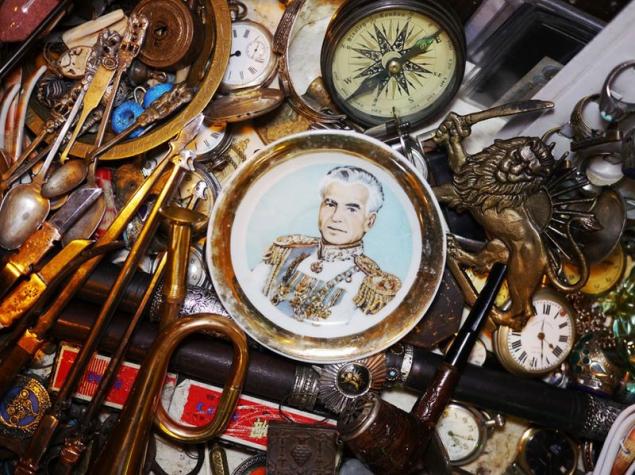
Two shepherd leads a flock of sheep public Palangana in the pasture. State Grants some rural areas have provided him loyal followers who can at any time to "tighten" for the creation of problematic situations in urban centers. Rustic "Basy" was used to disperse demonstrations in 2009, which killed seven anti-government protesters.
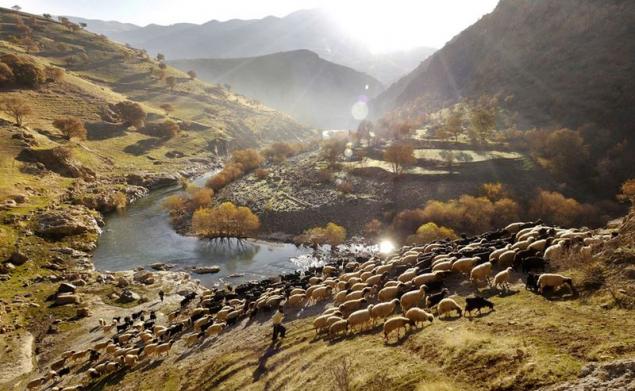
Group of friends in the hills above Tehran. Many (or rather - everyone I met) young Iranians have a sense of profound shame for the government and the way the nation is perceived abroad. Zach Clayton, a British cyclist completing his round the world race on March 23 described Iran as a country with the good people of all through which he had to pass. "I find the majority of Iranians - especially younger generations - conscious of the world around them ... with the ardent desire of freedom, in which he refuses to cut off from the life of the ultra-conservative religious elite," - says Zack.

Source: bigpicture.ru

"I think because of the fact that the journalists' access to the country is very limited, people have formed a distorted view of what really is Iran. Mode prefers to portray the country as the boiler anti-Western sentiments, so they spread the news about the chanting fanatics who will gladly pick up foreign channels. For ordinary Iranians as the government is the source of endless embarrassment and even shame. In all the time I spent in Iran, I did not see anything except the address of good intentions and dignity in pronounced contrast with my experience in other countries of the Middle East. Last year in Kyrgyzstan, I met a soldier of US special forces, who said to me, when it comes to the Middle East, America are not the friends and not the enemies »
Palangan village in the mountains near the border with Iraq. Palangan perfectly illustrates the rural settlement, received subsidies from the government. Many residents are employed in the nearby fish farm or are paid members of the volunteer militia "Basy" in the scope of activities which includes the prevention of "zapadofikatsii" and preserving the achievements of the 1979 Islamic revolution and its leader, Ayatollah Khomeini, including strict rules on women's clothing and the relationship between men and women.

Working inside the mosque Vakil in Shiraz. The mosque is now a tourist attraction, but visitors to her a little bit. Although the tourism industry is growing, western tourists still account for only 10% of the total. One guide told me that their scare horrific government statements that have nothing to do with the real lives of ordinary Iranians.

The palace complex in northern Tehran Saadabad Islamic revolutionaries put the statue half overthrow of the Shah. Today, students come to the guided tours, walking past his boots and on to the palace to look at the former premises of the Shah.

Women in the hills above Tehran at sunset. Hides clothing including head covering is obligatory for women in the Islamic Republic. However, the exact definition of "modesty" is not what causes gusts of struggle between the young and the Iranian authorities every spring. Regularly you can see female police check the passersby at the exit of the subway. If a woman's dress would be regarded as "immodest", her arrest. In 2010, the religious leaders in Tehran accused of frequent earthquakes in Iran women who "introduced the young men in fornication" with their revealing outfits.

A shepherd leads his flock to pasture in the mountains on the Iraq-Iran border.

View of central Tehran mosque minaret Sepahsalar.

Mausoleum of Ayatollah Khomeini in Tehran. Work on the unfinished building have been going on for 23 years. With the growing economic chaos in the country, its completion is still postponed indefinitely.

Young worker passes through the colorful stained-glass windows from the glare of the Tehran bazaar. When Khomeini Iranians were encouraged to start a large family. By 2009, almost 70% of Iran's population was under the age of 30 years. However, according to some reports, the country is the least religious of all the countries of the Middle East. Therefore, instead of the "Army of Islam", to the cultivation of which Khomeini called on the younger generation now has become the greatest threat to the deeply unpopular regime.

Details of Persepolis - the capital of the ancient Persian Empire. The conquest of Persia by the Arabs led to the Islamization of Iran, but the Iranian language Farsi alive. The poet Ferdowsi 11th century, called the "Iranian Homer", written in Persian epic called "The Book of Kings." Created with minimal Arab influence, this book helped preserve Farsi - one of the oldest on earth. It ends with the invasion of the Arabs, to show how disaster for Persia.

Young twins in Metro Tehran.

Collection of contemporary art worth 2, 5 million dollars belongs to the Museum of Contemporary Art in Tehran. During the few illuminated 2011 exhibition of work by artists such as Warhol (pictured), Pollock, Munch, Hockney and Rothko were exhibited for the first time since 1979, when the former owner of the collection of Queen Farah Pahlavi, was forced to flee the country with his husband - the last Shah of Iran.

Details of Persepolis. After the Islamic revolution, radical religious leaders called for the destruction of the ancient city, but public discontent prevailed. "They understood that it will unite the people against them," - says English teacher Ali, quoted by National Geographic.

Drawing on the wall of the former US embassy in Tehran. This wall painting, in contrast to official statistics, shows that, despite the US sanctions and controlled by the Americans operation against selected and popular prime minister, among the Iranians more than positively inclined toward the United States than, for example, among the Turks or Indians. < br />

Kurd arranged for the night, guarding equipment for road construction in the mountains near the Iran-Iraq border. The border is infested by smugglers of bringing alcohol from Iraq (where it is legal) in the village on the Iranian side. From there it is transported to the city. Tehran can of beer on the black market is worth about $ 10.

Two soldiers were attacked at the Tehran Metro in the conflict. An angry crowd mostly well-dressed young men hit a soldier in the head at least four times. Both soldiers had to get out of the subway at the next station. (Since the author is not fluent in Farsi to find out the cause of the conflict he could not).

Azadi Tower ("Freedom") - a gateway to Tehran, constructed in 1966, 24-year-old Hossein Amanat. As a practicing follower of the teachings of the Baha'i, Hossein was forced to leave Iran after the Islamic government declared followers of the teachings of "unprotected Gentiles." He now lives in Canada.

The man in the south of Tehran, in the working area of the city. Over the past 14 months to tighten sanctions reduced the cost by almost half of Iran's currency and caused an explosion of inflation. Life is extremely difficult for ordinary Iranians, but many feel powerless to change the situation. "We are not so naive as Arabs to think that violent uprising magically fix everything. We already had a revolution ... and things got worse, "- says a resident of Tehran.

The memorial plate with the image of the former Shah of Iran in an antique shop in Shiraz. Shah was given as a result of the authoritarian government supported by the MI6 and the CIA operation in 1953, which overthrew Prime Minister Mohammed Mossadegh, and cost the lives of several hundreds of Iranian citizens. "Operation Ajax" was held after Mossadegh nationalized the oil industry in Iran, thus blocking the British dominance in the industry, which they controlled since 1913. Mossadegh was democratically elected leader, with widespread support and popularity among the population. As a result, the Shah, whom many saw just brutal puppet of the West, has received strong dissatisfaction of the population. Anger at Western invasion has provided strong support for the original fierce anti-Western Ayatollah Khomeini.

Two shepherd leads a flock of sheep public Palangana in the pasture. State Grants some rural areas have provided him loyal followers who can at any time to "tighten" for the creation of problematic situations in urban centers. Rustic "Basy" was used to disperse demonstrations in 2009, which killed seven anti-government protesters.

Group of friends in the hills above Tehran. Many (or rather - everyone I met) young Iranians have a sense of profound shame for the government and the way the nation is perceived abroad. Zach Clayton, a British cyclist completing his round the world race on March 23 described Iran as a country with the good people of all through which he had to pass. "I find the majority of Iranians - especially younger generations - conscious of the world around them ... with the ardent desire of freedom, in which he refuses to cut off from the life of the ultra-conservative religious elite," - says Zack.

Source: bigpicture.ru
